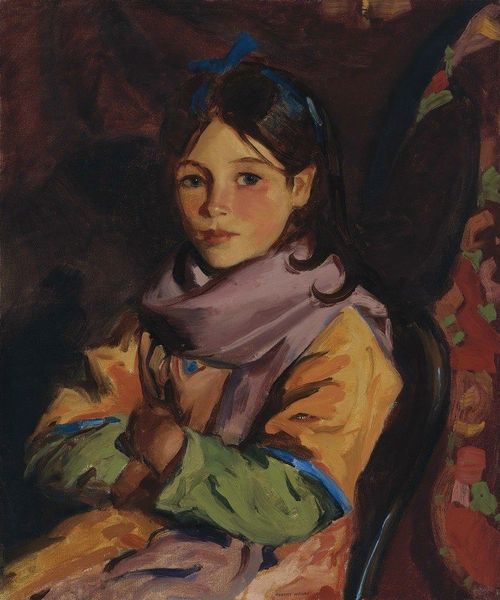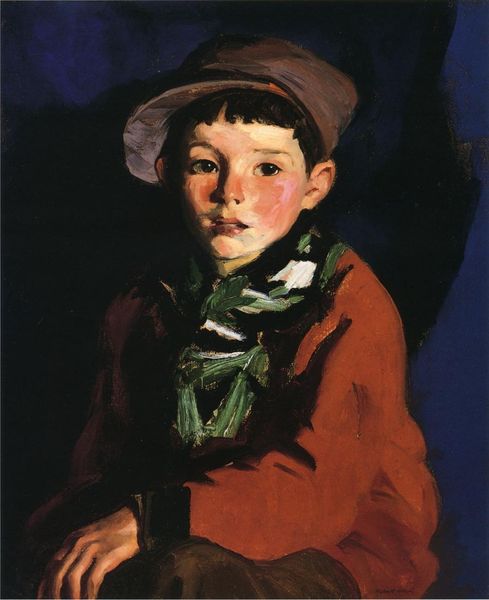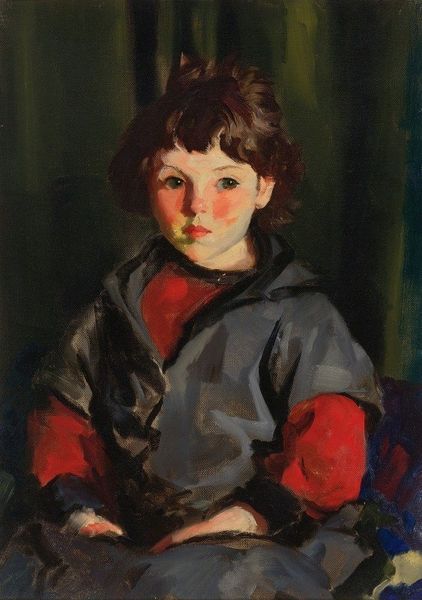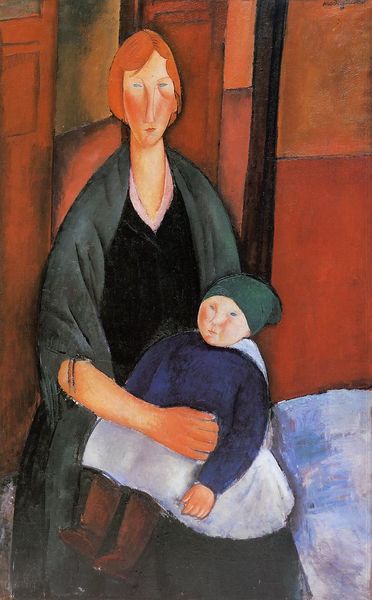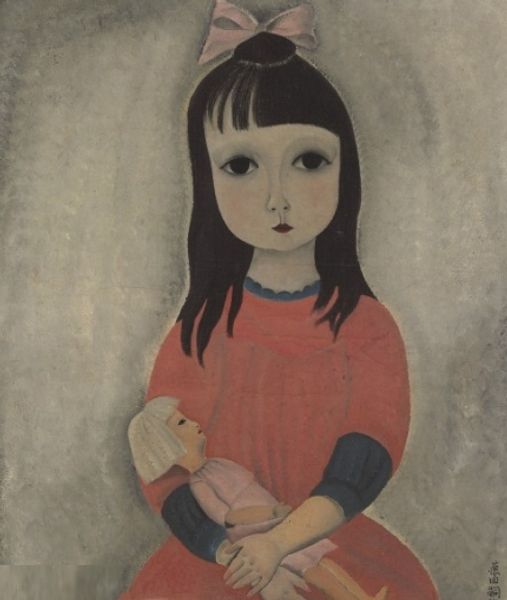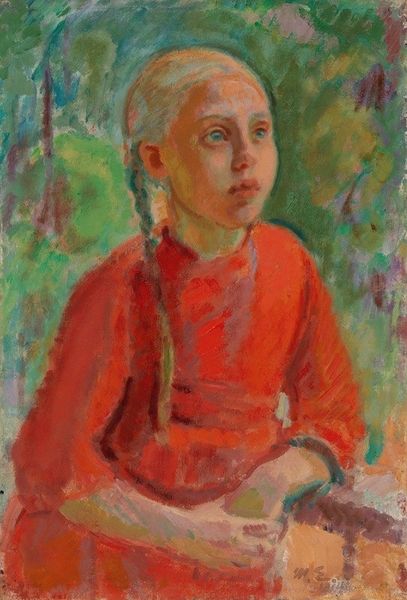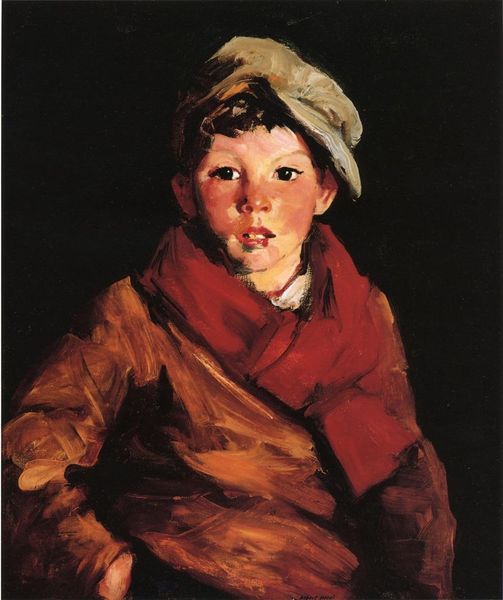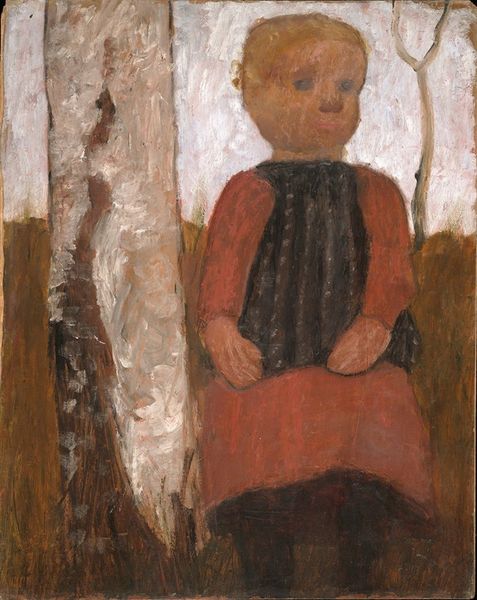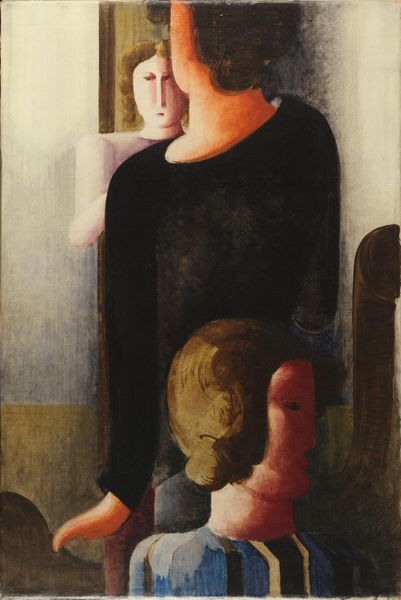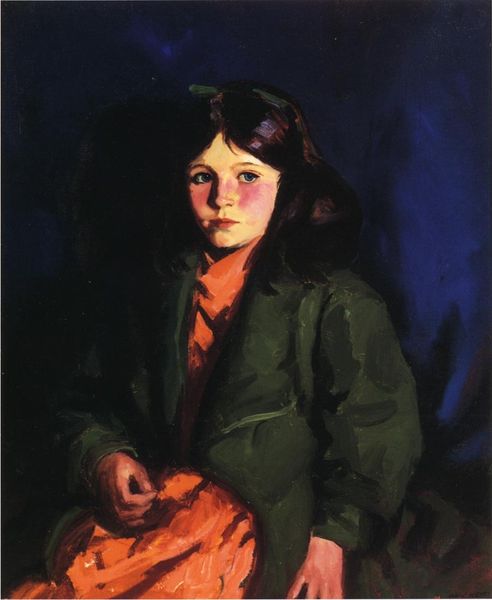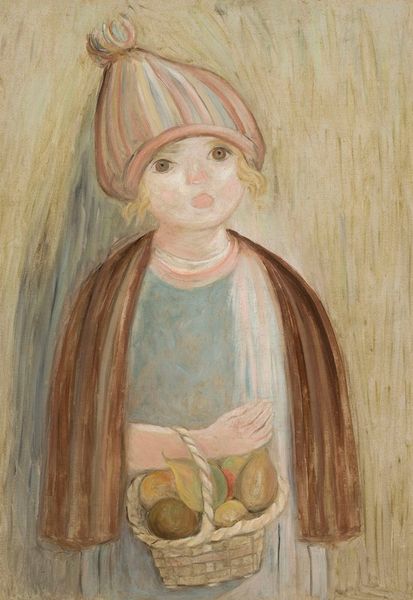
oil-paint
#
oil-paint
#
landscape
#
soviet-nonconformist-art
#
oil painting
#
russian-avant-garde
#
genre-painting
#
realism
Copyright: Public Domain: Artvee
Curator: Let's take a look at Boris Grigoriev's 1923 painting, "Boy At Harvest Time." It’s an oil painting currently residing in a private collection. Editor: My immediate reaction is one of quiet observation. The boy, rendered in soft, almost muted tones, seems to be watching us as much as we are watching him. It’s a very still moment captured. Curator: Grigoriev, although associated with the Russian avant-garde, presents a work firmly rooted in realist genre painting here, capturing the rural life of post-revolutionary Russia, which certainly invites interrogation, and particularly in regard to class. Look at his almost brutal honesty when portraying peasant life in contrast to depictions favored by the dominant cultural apparatus. Editor: Yes, the earth tones contribute to that rawness. But it's also about labor, isn't it? Notice the muted landscape and what appear to be field workers; then there's the oversized clothing dwarfing this boy, maybe suggesting poverty, or perhaps hinting at inheriting work, labor, responsibility. How might we reconcile this depiction, particularly in 1923? Curator: We must look into the political implications of depicting the peasantry following the Revolution. While on one level, there’s this apparent attempt at objective documentation of life of these children; Grigoriev does not shy away from social commentary—his choice of subject certainly implicates the viewer in the socioeconomic landscape of the time. Consider too the rise of Soviet nonconformist art: can we read in this work a tacit resistance through realism? Editor: It certainly could. Perhaps even in that somewhat melancholic gaze. It does raise questions of agency and representation. I find it intriguing how a seemingly straightforward depiction of a child in a rural setting can be such a powerful commentary on social structures. Curator: It really exemplifies the power of art as both mirror and a critical lens. Editor: Absolutely. It underscores the importance of looking beyond the surface, of questioning the narratives embedded in seemingly simple representations. Curator: Indeed. Thanks for bringing this piece to life in such an insightful way. Editor: My pleasure. The ability of art to stir reflection and prompt discourse is endlessly fascinating.
Comments
No comments
Be the first to comment and join the conversation on the ultimate creative platform.

